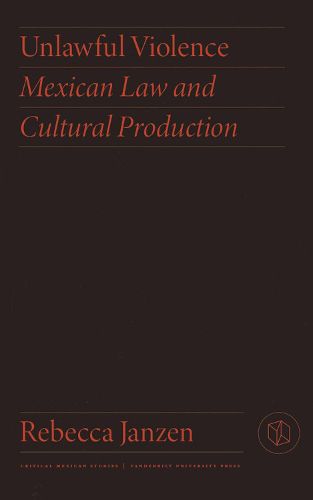Readings Newsletter
Become a Readings Member to make your shopping experience even easier.
Sign in or sign up for free!
You’re not far away from qualifying for FREE standard shipping within Australia
You’ve qualified for FREE standard shipping within Australia
The cart is loading…






Violence has only increased in Mexico since 2000: 23,000 murders were recorded in 2016, and 29,168 in 2017.
The abundance of laws and constitutional amendments that have cropped up in response are mirrored in Mexico’s fragmented cultural production of the same period. Contemporary Mexican literature grapples with this splintered reality through non-linear stories from multiple perspectives, often told through shifts in time. The novels, such as Jorge Volpi’s Una novela criminal A Novel Crime and JuliAn Herbert’s La casa del dolor ajeno The House of the Pain of Others take multiple perspectives and follow non-linear plotlines; other examples, such as the very short stories in !Basta! 100 mujeres contra la violencia de gEnero Enough! 100 Women against Gender-Based Violence, also present multiple perspectives.
Few scholars compare cultural production and legal texts in situations like Mexico, where extreme violence coexists with a high number of human rights laws. Unlawful Violence measures fictional accounts of human rights against new laws that include constitutional amendments to reform legal proceedings, laws that protect children, laws that condemn violence against women, and laws that protect migrants and indigenous peoples. It also explores debates about these laws in the Mexican house of representatives and senate, as well as interactions between the law and the Mexican public.
$9.00 standard shipping within Australia
FREE standard shipping within Australia for orders over $100.00
Express & International shipping calculated at checkout
Violence has only increased in Mexico since 2000: 23,000 murders were recorded in 2016, and 29,168 in 2017.
The abundance of laws and constitutional amendments that have cropped up in response are mirrored in Mexico’s fragmented cultural production of the same period. Contemporary Mexican literature grapples with this splintered reality through non-linear stories from multiple perspectives, often told through shifts in time. The novels, such as Jorge Volpi’s Una novela criminal A Novel Crime and JuliAn Herbert’s La casa del dolor ajeno The House of the Pain of Others take multiple perspectives and follow non-linear plotlines; other examples, such as the very short stories in !Basta! 100 mujeres contra la violencia de gEnero Enough! 100 Women against Gender-Based Violence, also present multiple perspectives.
Few scholars compare cultural production and legal texts in situations like Mexico, where extreme violence coexists with a high number of human rights laws. Unlawful Violence measures fictional accounts of human rights against new laws that include constitutional amendments to reform legal proceedings, laws that protect children, laws that condemn violence against women, and laws that protect migrants and indigenous peoples. It also explores debates about these laws in the Mexican house of representatives and senate, as well as interactions between the law and the Mexican public.